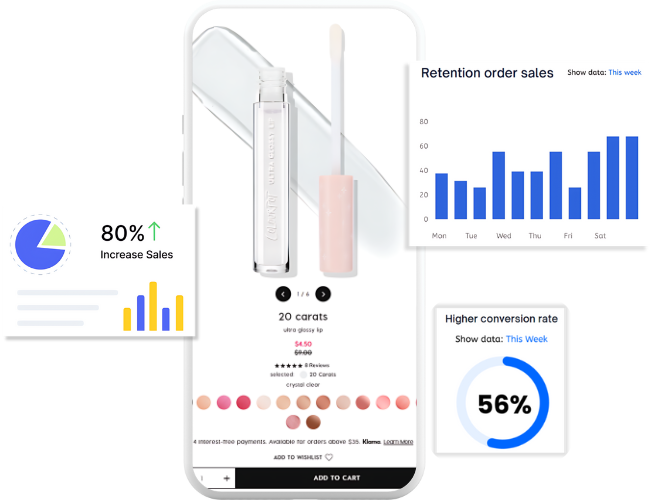The shipping rate is the amount you charge your customers and the product cost they order. E-commerce business comes with a whole package of essential and business-relevant tasks. Shipping rates have an undeniable impact on ROI and customer retention. They are crucial factors to consider. It is challenging for eCommerce retailers to decide on bearable shipping rates.
So, it’s crucial to merge shipping software with an eCommerce platform. But, if you are a Shopify eCommerce business, you have access to Shipping – a Shopify shipping software.
Shopify Shipping integrates quite an array of features centred on discounted shipping prices.

Shipping zones and markets
Shopify Zones: Customizing Shipping and Taxes
Shopify Zones feature lets sellers set up specific shipping rates and tax calculation by areas. It also allows mapping the prices to different zones, giving each customer an individualised experience. Shopify Zones is Shopify’s feature that allows geo-targeting with no limitations. Businesses can use techniques like country, state, postal code input or code. This, in turn, enables them to change shipping and tax rates according to the requirements. Merchants use Shopify Zones to show only the correct shipping costs to customers because they know that the customer is not the customer. They guarantee that taxpayers will fulfil the tax obligations of every tax jurisdiction. Shopify Zones give maximum flexibility, with free local shipping and consistent international rates. The latter is vital as it renders the issue of varying coasts moot. They simplify merchants’ problems on logistics.
Shopify Markets: Understanding Diverse Customer Segments
Shopify Markets provide worldwide coverage that relate to where the merchants conduct business. This entails the interaction with various foreign localities. Know the language spoken, the local currency, their tastes and laws in the chosen markets. It is important for these regions to be at the centre of our organisation’s activities. Businesses, as a rule, have required stores in different areas. They can bring to the table by accommodating the needs of customers at the same time. This comprises the usage of native currencies and an approach of multi-language support. It further follows the local laws that may include tax rates, product listing policies, and so on. Compliance with the requirements of these regulations is essential. Hence, this whole sellers can do so to target client experience. They may, in addition, provide a boost to their sales, and enlarge their share of the world’s markets.
Importance of Optimising Zones and Markets
Shopify regions and market optimization are crucial for international scaling. By configuring zones and understanding diverse markets, businesses can:
1. Make the user experience better through localised services and pricing models.
2. Increase conversion rates by reducing buying friction. This includes transparent shipping costs and using familiar currencies.
3. Follow regulatory measures in the region, thereby preventing legal liability or lawsuits.
4. Optimise supply chain costs by adjusting prices for destination and distance. This helps optimise efficiency and control expenses.
5 types of shipping rates on Shopify
1. Flat Rate Shipping Method
The flat rate shipping method charges the same shipping fee for all orders. Flat rate does not take into account the size, weight, or destination. It simplifies the shipping process by offering a consistent rate. During checkout, customers will see how shipping affects their total order. They’ll know exactly how much it adds. . They won’t have to wonder about it. This manual simplicity is an added benefit for merchants. Their shipping costs stay consistent unless they change their pricing structure. With the flat rate, shipping organisations can establish reliable and predictable cost processes. Thus, this procedure helps reveal shipping charges and simplifies the shipping process. So, flat-rate Shipping enhances efficiency in the shipping process for businesses and consumers. And consumers take this option because of that.
2. Product-based Shipping Rates
Product-based Shipping is based on the weight of items in an order being shipped. Merchants can select price structures based on weight or designated amounts for shipping. They have several options to choose from. Thus, the shipping costs are matched with the weight of the items being shipped. This is useful for companies with products of varying weights, such as metals. It ensures accurate computation of shipping charges based on size. The heavier the items are, the higher the delivery cost will be as compared to the lightweight items. Weight-based shipping enables freight merchants to provide transparent and competitive pricing. This pricing is separate from the actual costs of shipping items. This technique simplifies the checkout process. It avoids complex maths calculations. So, the shipping process would be straightforward for the merchants and the customers. Above all, weight-based shipping gives businesses economic control over shipping costs. It’s one of the most effective tools available for this purpose. At the same time, the customers remain as happy as ever.
3. Price-based Shipping Rates
Price-based shipping tiers calculate transportation costs based on the total order value. It’s determined by the combined value of all items. Merchants can calculate shipping costs based on product weight. They can also offer discounts or free shipping for many orders. The campaign encourages customers to spend to qualify for free delivery. This in turn boosts sales. This can be illustrated by a retailer, for instance, who might give out free Shipping for orders above $50. The shopper can put up to fifty dollars worth of products to reach this qualification. Retailers can put in place tiered shipping rates. As the order value increases, the cost per unit decreases.This can align with the order value itself. This technique enhances credibility and satisfies customers by displaying accurate shipping charges. It also encourages them to make extra purchases. Price-based Shipping provides an easy-to-grasp checkout process for customers. They can determine the shipping charge for each basket value. This shipping policy increases shoppers’ purchasing volume. It promotes a positive shopping experience through transparency and flexibility.
4. Position-dependent Shipping Rates
Position-dependent Shipping personalised parcel prices based on the order’s fulfilment location. It’s both price customization and shipping cost model. Retailers can consider adjusting shipping rates based on these regions. This will allow for customised pricing systems specific for location. With this, delivery depends on location and shipping price could be specific for each location. E-tailers will be able to price out shipping rates based on regions in consideration. They are the means of minimising the delivery fees for a small location. In the case of international shipments, higher ring-fencing is also paid. Therefore, they can balance out the extra expenses such as heating bills and electricity charges. The Location-specific Shipping model intentionally allows a business to offer unique shipping charges determined by a customer’s location. This is beneficial to both companies as forming a partnership enables brands to extend into new markets and distribution channels. This means that customers can see relatively low down transmission costs and are happy with the services. Which not only widens consumer choice but also enhances the shopping experience. The customers are inclined to revenue in price of shipping fees which they perceive as stable and fair. These costs have to be reflective of the distance the mail will travel. This is the reason why location based Shipping is a main reason for the in-house success of e-commerce.
5. Carrier Digital Shipping Rates
Carrier Digital is a feature for calculating shipping costs. It works by sending packages to third-party carriers such as USPS, FedEx, or UPS. This feature allows customers to see shipping rates at checkout. The rates consider factors like package size, weight, and destination. Retail stores incorporate shipping costs into their systems. This allows them to calculate shipping charges for each order. This calculation is based on the specific details of each order. Thus, both reliability and transparency are ensured in the delivery process. Customers can choose their shipping option from various speedy deliveries by the carrier. They can select based on their preferences and urgency. For instance, they can order faster Shipping for an urgent order. Or they can prefer a more cheap option for delays that are not time-sensitive. Cheap carriers have streamlined shipping calculations. Thus, it saves time for both the company and the client. Clients can choose the shipping method that aligns with their preferences or budget. It aids merchants in consolidating their shipping processes. And this in turn keeps their customer’s essential impression positive by trusted shipping.
How to set up shipping rates on Shopify?
Setting up the shipping rates with Shopify is simple and can be done so that it meets all the needs of your business. Here’s how to do it: Here’s how to do it:
Access Shipping Settings
Go through your Shopify admin dashboard, then click on ‘Settings’ and then on ‘Shipping’.
Add Shipping Zone
First of all, create a shipping zone, which is used to define the area you will be shipping your products to. Zones may be designed for separate areas, like countries, cities, or regions.
Set Up Shipping Rates
You can add a shipping zone to the zone section. Then, you can set up shipping rates using your preferred method. Methods can be flat rate, weight-based, price-based, or carrier calculated.
Configure Shipping Methods
Decide what type of Shipping you intend to offer. For instance, you can opt for the local, national or international option.
Define Shipping Rates
State the total shipping costs using the methods available and the strategy you choose to carry out the shipping activities. For instance, you can set a universal rate for all orders. Or, adopt bundled prices depending on order value and size instead.
Add Shipping Rules
Adjust shipping rules to include set-rates shipping. Offer courier service on the basis of conditions or prices.
Test Shipping Setup
Take care that delivery methods are ready before you launch the store. You can apply the special rates at the checkout.
Save Changes
Now you are done with configuring shipping rates for different categories. Don’t forget to save the change by clicking on the “Applied to store” option.
Track and Adjust
Check your shipping rates from time to time. Change them as needed based on factors like carrier pricing and user feedback.
What’s Next?
If you set up an online shop using Shopify, then Shopify Shipping is a great asset in many ways. The benefits are manifold.
You now have various shipping alternatives. Ship with various providers at rates that suit your business.
FAQs About Shopify Shipping Rates
Note: This blog was originally written in English and translated using an automated tool to make the content accessible to a global audience. We believe in sharing valuable insights with everyone and apologize for any inaccuracies. If you spot any errors, please feel free to contact us for corrections. Your feedback helps us improve and ensures the content’s value is fully realized.

Zero Tan
Content Specialist
As an eCommerce content creator, I aim to share insights, trends, and strategies that may help you navigate the digital marketplace more effectively. My content is designed to provide practical value and inspiration, supporting your business growth and helping you stay informed about industry developments.




